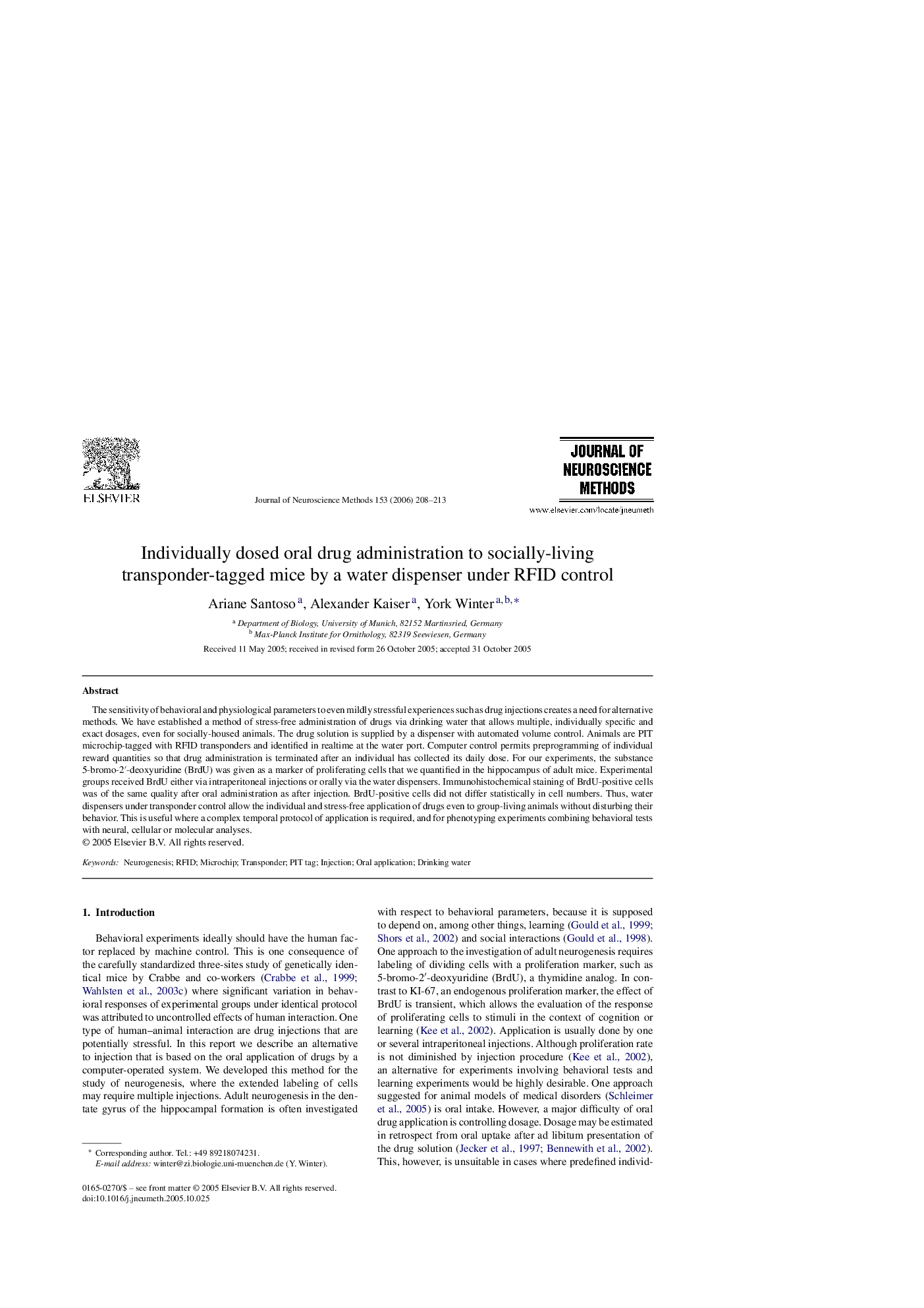| کد مقاله | کد نشریه | سال انتشار | مقاله انگلیسی | نسخه تمام متن |
|---|---|---|---|---|
| 4336912 | 1295233 | 2006 | 6 صفحه PDF | دانلود رایگان |

The sensitivity of behavioral and physiological parameters to even mildly stressful experiences such as drug injections creates a need for alternative methods. We have established a method of stress-free administration of drugs via drinking water that allows multiple, individually specific and exact dosages, even for socially-housed animals. The drug solution is supplied by a dispenser with automated volume control. Animals are PIT microchip-tagged with RFID transponders and identified in realtime at the water port. Computer control permits preprogramming of individual reward quantities so that drug administration is terminated after an individual has collected its daily dose. For our experiments, the substance 5-bromo-2′-deoxyuridine (BrdU) was given as a marker of proliferating cells that we quantified in the hippocampus of adult mice. Experimental groups received BrdU either via intraperitoneal injections or orally via the water dispensers. Immunohistochemical staining of BrdU-positive cells was of the same quality after oral administration as after injection. BrdU-positive cells did not differ statistically in cell numbers. Thus, water dispensers under transponder control allow the individual and stress-free application of drugs even to group-living animals without disturbing their behavior. This is useful where a complex temporal protocol of application is required, and for phenotyping experiments combining behavioral tests with neural, cellular or molecular analyses.
Journal: Journal of Neuroscience Methods - Volume 153, Issue 2, 15 June 2006, Pages 208–213